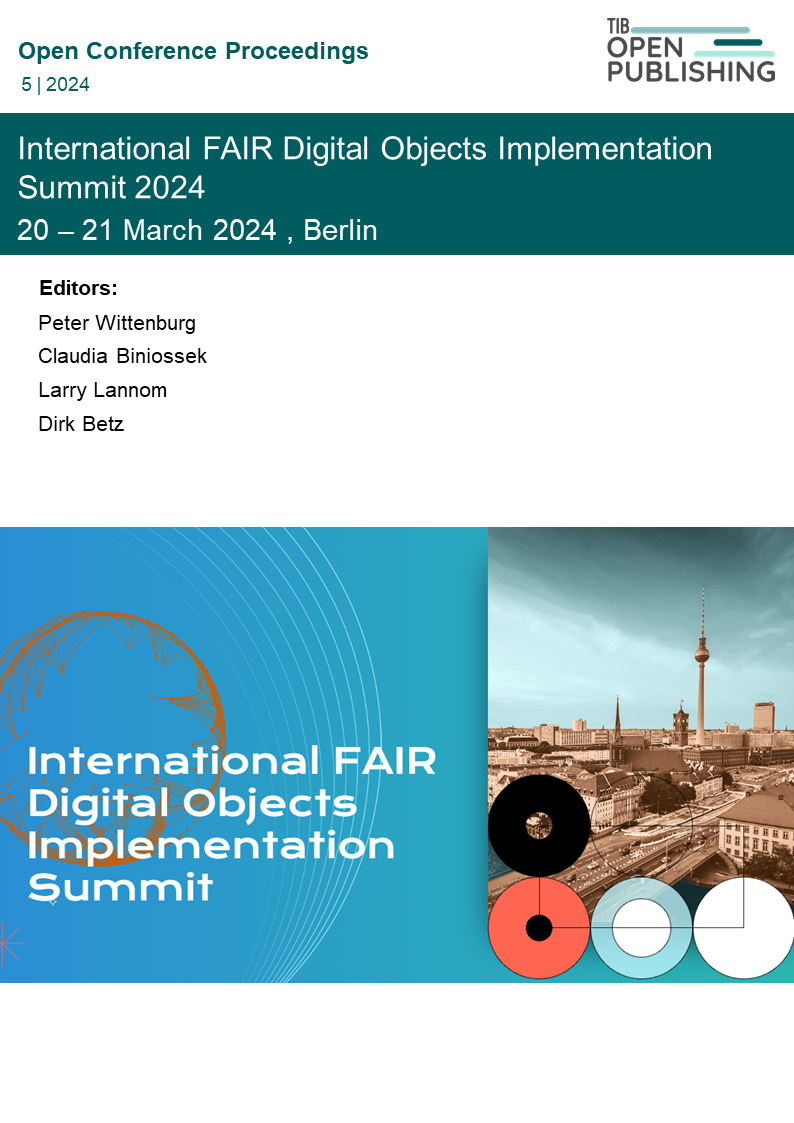An Overview of Decentralized Web Technologies as a Foundation for Future IPFS-Centric FDOs
DOI:
https://doi.org/10.52825/ocp.v5i.1054Keywords:
dPIDs, Decentralized Architectures, Persistent Identifiers, Deterministic Resolution, W3C Decentralized Identifiers, Content-Based Addressing, Data Soverignty, Directed Acyclic Graph (DAG), Blockchain Logging, FAIR Digital ObjectsAbstract
dPIDs are an emerging PID technology based on decentralized architectures and self-sovereign identity [1]. dPIDs are PID containers, forming persistent storage systems where each object is identified by a unique PID. dPIDs are immune to content drift and resolves deterministically their mapped content, providing a reproducible binding between the (meta)data and identifier. As dPIDs take a decentralized net-work protocol approach to PIDs, their implementation of FDOF recommendations may require further explanation [2]. This presentation is a primer on the decentralized technologies behind dPID and their associated benefits, including a discussion of their potential usefulness for FDOs. dPIDs can form the fabric for a persistent, interoperable FDOs landscape.
Data replication via the underlying content-addressed peer-to-peer network facilitates the implementation of FDO-G2 [3], ensuring long-term persistence and mitigating the risk of data loss via implicit data replication and storage redundancy between network participants. Content addressing gives dPID the property of deterministic and verifiable resolution, exceeding the requirements of FDO-PIDR2. A subsequent benefit of this open protocol-based approach is that dPIDs prevent the formation of vendor-lock-in and data silos, facilitating FDO-PIDR1 and FDO-G1. The provenance of data and updates to dPIDs are registered by digital signatures based on W3C de-centralized identifiers (DID), facilitating FDO-PIDR6. Data sovereignty is facilitated using a Directed Acyclic Graph (DAG) approach compliant with FDO-GR4, FDO-GR5 and FDO-GR6. DAGs also allow for granular machine actionability in compliance with FDO-GR1 and FDO-GR11. As PIDs are logged on Blockchain, tomb-stones for dPIDs are inherently permanent in line with FDO-GR12.
Downloads
References
D Hook, B Kramer, P Koellinger, N Quaderi (2023). “Innovation, Technology and Infra-structure - APE Conference 2023.” figshare. Presentation. https://doi.org/10.6084/m9.figshare.21953864.v1
S Soiland-Reyes, C Goble, P Groth (2023). “Evaluating FAIR Digital Object and Linked Data as Distributed Object Systems.” arXiv:2306.07436v2 [cs.DC]. https://doi.org/10.48550/arXiv.2306.07436
A Ivonne, B Christophe, B Daan, et al. (2023). FDO Forum FDO Requirement Specifica-tions. https://doi.org/10.5281/zenodo.7782262
Desci Labs. (2024). “nodes.” GitHub. https://github.com/desci-labs/nodes (accessed Jan-uary 12, 2024).
J Benet (2014). “IPFS - Content Addressed, Versioned, P2P File System.” arXiv:1407.3561v1 [cs.NI]. https://doi.org/10.48550/arXiv.1407.3561
IPLD. (2023). “Docs.” IPLD Documentation. https://ipld.io/docs/ (accessed 13 December, 2023).
S Soiland-Reyes, P Sefton, M Crosas, et al. (2022). “Packaging research artefacts with RO-Crate.” Data Science, 5(2). https://doi.org/10.3233/DS-210053
DeSci Labs & DeSci Foundation. (2023). “DeSci Codex: The Collaborative Data Ex-change.” https://codex.desci.com/ (accessed 13 December 2023).
D Buchner, O Steele, T Ronda (Editors). (2023). “Sidetree Protocol Specification.” De-centralized Identity Foundation. https://identity.foundation/sidetree/spec/ (accessed 13 December 2023).
A Swartz (2011). “Squaring the Triangle: Secure, Decentralized, Human-Readable Names.” http://www.aaronsw.com/weblog/squarezooko (accessed 13 December 2023).
Published
How to Cite
Conference Proceedings Volume
Section
License
Copyright (c) 2025 Andrei Vukolov, Erik Van Winkle, Erik Schultes, Line Pouchard, Sina Iman, Philipp Koellinger, Christopher Hill

This work is licensed under a Creative Commons Attribution 4.0 International License.
